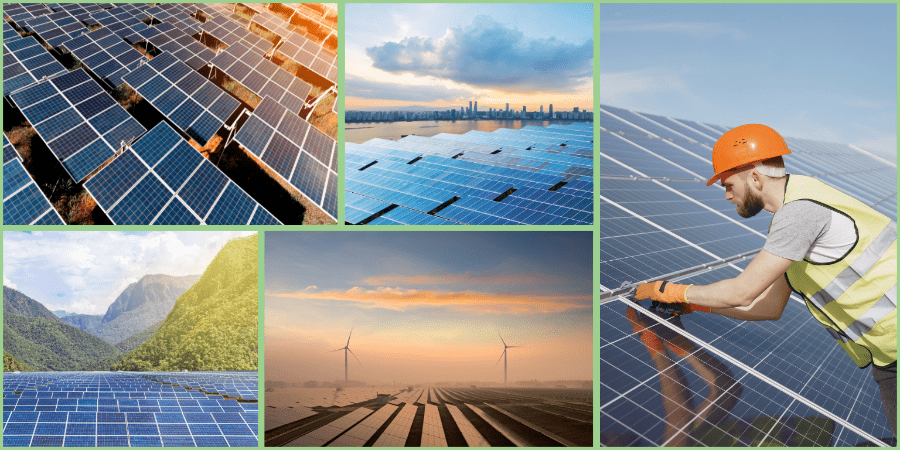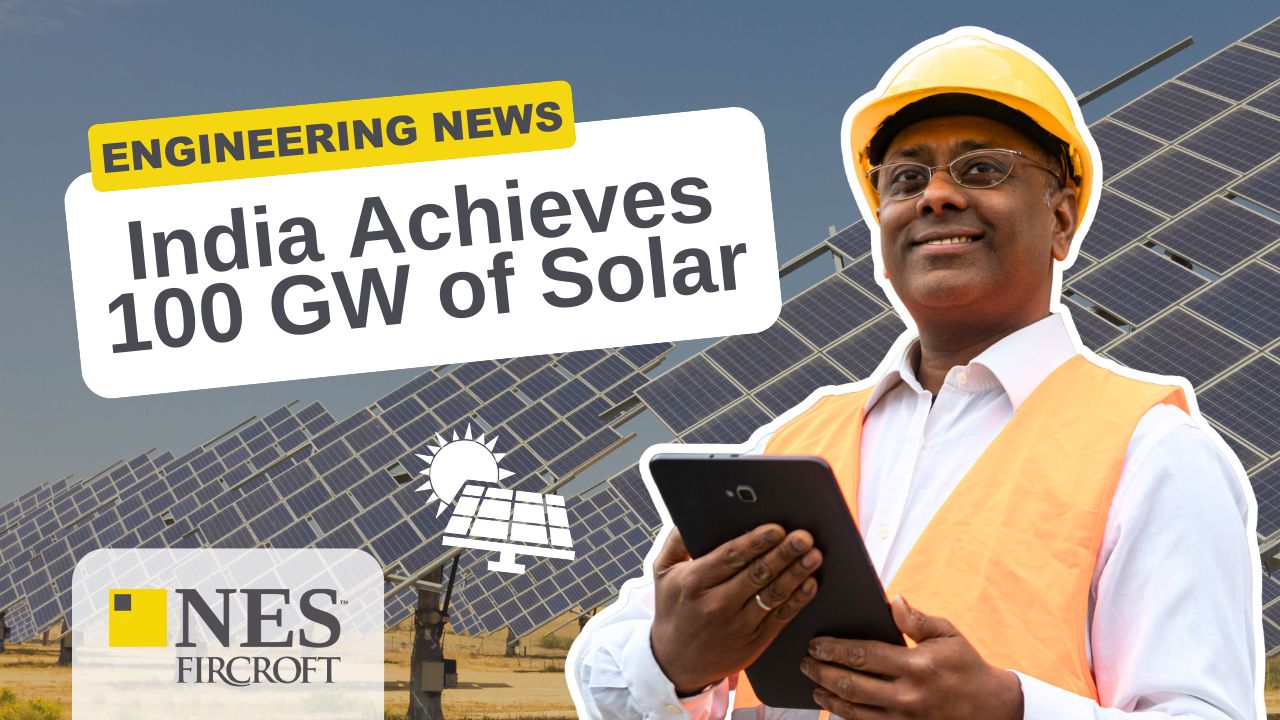
Which Countries Are Leading The Way With Solar Power?
30 Jul, 20214:49The world currently relies heavily on coal, oil, and natural gas for its energy. However, so...

The world currently relies heavily on coal, oil, and natural gas for its energy. However, some pockets of the planet are investing heavily in renewable solar power, funding enormous projects and encouraging consumers to make heavier use of panels in their home environments.
Both activities are creating a large number of job opportunities and are ultimately paving the way for a sustainable future within the energy industry. Here we look at the efforts of the top 6 countries to successfully leverage the benefits of utilising solar energy on a national scale.
6. Italy – 21.6 GW
Historically, Italy has relied on foreign imports for a large portion of their energy, but over the last 10 years solar power generation has increased rapidly; there are currently more than 730,000 solar panels installed in the country.
The increased use of solar panels is partially due to a substantial government scheme that encourages domestic solar energy production through offering a personal income tax deduction equal to a maximum of 50% of expenses incurred.
The scheme came to pass after the EU set a target for 11 nations to generate 20% of their energy from renewable sources by 2020. Despite this ambitious target, Italy was the only one of the 11 nations to actually reach this objective, with years to spare.
Because of their unprecedented success in the solar industry, the Italian Government has since raised its targets for power generation from 72 Terawatt-hour (TWh) to 74 TWh and it has also set an ambitious installed capacity target of 50 Gigawatt (GW), despite only needing 30 GW to achieve their original target of 72 TWh.
5. India – 40 GW
India has made great efforts over the past few years to limit its CO2 emissions and increase its share of renewable energy within its energy mix. The Indian government has set a target of 450 GW of renewable energy capacity by 2030, and it’s expected that solar power will be at the centre of this initiative.
The International Energy Agency (IEA) has estimated that solar would be worth 31 percent of the country’s energy mix by 2040, in accordance with current targets, compared to less than 4 percent currently.
India has already established 42 solar parks to make land accessible to solar energy promoters. As of January 2021, the Ministry of New and Renewable Energy has declared that a further 36.03 GW of solar energy projects are underway, and 23.87 GW are in the tendering process.
4. Germany – 53.7 GW
Germany has been amongst the world’s top generators of solar power for several years, and in 2004 they were one of the first countries to reach 1GW of cumulative installed photovoltaics (PV) capacity. Germany’s solar companies have over 27 PV power stations that produce more than 20MW of power and over 40 in total; the largest solar farms have capacities to produce over 100 MW.
Germany is also leading the way when it comes to residential solar power. It’s estimated that more than 120,000 German households now have solar units combined with battery storage installed in their homes. This is partially to do with the reduced costs associated with a solar PV system and a ‘feed-in-tariff’ programme. Many residents are installing solar panels and benefiting largely from reduced energy costs.
By 2050, Germany aims to source 80% of their electricity from renewable sources.
3. Japan – 67 GW
Japan has been at the forefront of solar power technology since the late 1990s. As well as being a global leader in power generation, they’re also leaders in manufacturing the technologies needed to build solar panels. In 2019, they were responsible for 45% of the world’s photovoltaic cells.
For the last 10 years, the Japanese government has put solar power at the top of their priority list, adapting their policies to reflect this and offering subsidised installation costs, making solar panels more affordable and attractive to residents.
Overall, Japan has more than 30 solar power stations across the country and currently holds the record for constructing one of the largest solar power buildings in the world. Named the ‘Solar Ark’ the facility is a solar photovoltaic power station that is over 300 metres wide and 37 metres tall. It boasts over 5,000 panels that produce 530,000KWh on an annual basis. Its ark shape is intended to be symbolic as it sets a positive example of clean energy production.
2. USA – 76 GW
The USA has a long history with solar power; construction on SEGS thermal power plant began as early as 1983 and since its inception, it has produced a grand total of 17,468,342 Megawatt-hour (MWh). The US boasts some of the world’s largest solar plants and in 2018, during summer months, they generated 31.93 GW of power alone.
The US is also witnessing significant growth in solar PV installations in the residential sector. Many states have set ambitious renewable energy goals and in the first quarter of 2019, the US renewables sector produced more electricity than the country's coal power plants for the first time, in history, according to analysis by the Institute for Energy Economics.
1. China – 254 GW
Asia is heavily investing in solar power and many of the world’s top generators come from this continent. The top spot, though, goes to China, who is a global leader for solar photovoltaics usage and has been since 2015 when the country surpassed Germany. By the end of 2018, Chinese energy companies had 174GW of cumulative installed solar capacity, a huge increase from 2016’s grand total of 77GW. This growth is helped by the fact China is also the world’s largest manufacturer of solar panels.
Chinese energy providers now have their sights set on space, with scientists exploring the possibility of installing a space-based solar power station in orbit, 22,370 miles above the earth. The station would occupy an area covering 33 acres and could start to generate power before 2040.
Honourable Mentions - further solar power progress
Over the last few years, the renewable energy industry has seen many positive stories coming from the Middle East and Africa, although they haven’t made the top 5, they’re certainly worth a mention.
Egypt is making fantastic strides towards achieving an ambitious national goal of renewable energy making up 42% of the country’s energy resources by 2035.
Morocco is also on track to meet its goal of renewable energy sources making up 42% of its power resources by 2020, so much so that they are raising that target to 52% by 2030.
Oman is aiming for 10% of its energy production to come from “clean” sources by 2025 to reduce the country’s dependence on natural gas. Saudi Arabia’s first big solar project will soon get underway in Sakaka which is estimated to produce 300 MW, and the UAE has set a national goal to generate 44% of its energy from renewables, mainly solar, by 2050.
These countries are likely to ascend the list of global solar power leaders over the coming years as they are arguably the driest and sunniest regions on earth.
Solar power at NES Fircroft
At NES Fircroft we have over 40 years’ experience in the Power sector and we’re excited to see such drive and passion behind growth in the Solar Power industry, with so many countries raising their own targets and subsequently meeting them with time to spare. If you have staffing needs for a Solar Power project, our discipline-specific consultants can support with all stages of your project life cycle, supplying skilled personnel from the funding, design and installation phases right through to project management and grid installations.
We work on some of the most exciting renewable energy projects globally and we have plenty of job opportunities for engineers looking to enhance their energy careers.
Find out more about our experience in the Solar Power industry.








